Potřebujeme váš souhlas k využití jednotlivých dat, aby se vám mimo jiné mohly ukazovat informace týkající se vašich zájmů. Souhlas udělíte kliknutím na tlačítko „OK“.
ASTM C1589/C1589M-14
Standard Practice for Outdoor Weathering of Construction Seals and Sealants
Automaticky přeložený název:
Standardní praxe pro venkovní zvětrávání stavebních pečetí a tmelů
NORMA vydána dne 1.4.2014
Informace o normě:
Označení normy: ASTM C1589/C1589M-14
Poznámka: NEPLATNÁ
Datum vydání normy: 1.4.2014
Kód zboží: NS-11942
Počet stran: 8
Přibližná hmotnost: 24 g (0.05 liber)
Země: Americká technická norma
Kategorie: Technické normy ASTM
Kategorie - podobné normy:
Anotace textu normy ASTM C1589/C1589M-14 :
Keywords:
construction seals, cyclic movement, cyclic fatigue, outdoor testing, outdoor weathering, sealants, stiffness, weathering, weathering with movement, ICS Number Code 91.100.50 (Binders. Sealing materials)
Doplňující informace
| Significance and Use | ||||||||||||||||||||||||||
|
4.1 Tests conducted in accordance with this practice are used to evaluate the weatherability of construction seals and sealant materials when they are exposed to outdoor weather conditions. The weatherability of seals and sealants in actual outdoor use can be very different depending on the location because of differences in solar radiation, moisture, temperature, pollutants, and other factors. Sealant color may also affect weatherability. 4.2 This practice allows for three options: Option 1 – Procedure A in which the effect of movement during weathering is not considered; Option 2 – Procedure B in which specimens are weathered in conjunction with movement based on thermal changes. The applied strain is proportional to a combination of the temperature at the time the equipment is set up and subsequent thermal changes. This option closely mimics the actual movements that occur in many sealant installations, but is less repeatable than the movement in Procedure C; Option 3 – Procedure C in which the strain during weathering is manually applied. This procedure allows for excellent control and repeatability, but is less representative of movement in actual use conditions than the movement in Procedure B. Options 2 and 3 have been added to this practice based on peer reviewed scientific literature demonstrating that applied strain separately and in combination with other weathering stresses causes changes in the weatherability of sealants. 4.3 The type, frequency and amount of movement of sealants varies with location and may affect weatherability. It cannot be assumed, therefore, that results from one exposure in a single location will be useful for determining weatherability in a different location. Exposures in several locations with different climates (for example, solar radiation, moisture, temperature, pollutants, biological and other factors) that represent a broad range of anticipated service conditions are recommended. 4.4 It is strongly recommended that control materials of similar composition and construction to the test specimens and with known weatherability be exposed along with the test specimens for the purpose of comparing the performance of test materials to the controls. (See 6.2). 4.5 The results of short-term exposure tests can provide an indication of relative outdoor performance, but they shall not be used to predict the absolute long-term performance of a seal or sealant material. The results of tests conducted for less than 12 months will depend on the particular season of the year in which they begin. 4.6 Because of year-to-year climatatological variations, results from a single exposure test cannot be used to predict the absolute rate at which a seal or sealant degrades. Several years of repeat exposures are needed to determine an average test result for a given location. 4.7 Climatic and construction factors can impose cyclic movement upon sealed joints in use. This movement can impact the effects of outdoor weathering and often causes types of failure that are not produced by weathering without movement. Thus, the ability of building joint sealants to withstand temperature-induced movements of compression and expansion is an important property. 4.8 Outdoor weathering of specimens in combination with natural or forced cyclic movement during exposure can provide a more realistic assessment of the ability of a seal or sealant to withstand the combined effects of climate and movement encountered by seals and sealants in building construction applications. |
||||||||||||||||||||||||||
| 1. Scope | ||||||||||||||||||||||||||
|
1.1 This practice describes outdoor exposure procedures to be used as part of a test designed to determine the weatherability of building construction, seals and sealants. 1.2 This practice includes three
procedures for outdoor weathering. Procedure A exposes specimens to
outdoor weathering without movement. Procedure B and Procedure C
are, respectively, continuous natural and periodic manual
techniques for subjecting specimens to the combination of cyclic
movement and exposure to outdoor weathering.
1.3 This practice is limited to the method by which the construction seals or sealants are exposed to outdoor weathering as part of a test program. It refers to the types of evaluations to be performed following the outdoor exposure but does not describe the test methods. 1.4 Means of evaluation of the effects of weathering will depend on the intended use of the test material. 1.5 The values stated in either SI units or inch-pound units are to be regarded separately as standard. The values stated in each system may not be exact equivalents; therefore, each system shall be used independently of the other. Combining values from the two systems may result in non-conformance with the standard. 1.6 This standard does not purport to address all of the safety concerns, if any, associated with its use. It is the responsibility of the user of this standard to establish appropriate safety and health practices and determine the applicability of regulatory limitations prior to use. |
||||||||||||||||||||||||||
| 2. Referenced Documents | ||||||||||||||||||||||||||
|
Podobné normy:
Historická
1.12.2011
Historická
1.9.2014
Historická
1.6.2012
Historická
1.6.2014
Historická
1.5.2010
Historická
1.12.2011
Doporučujeme:
Aktualizace technických norem
Chcete mít jistotu, že používáte pouze platné technické normy?
Nabízíme Vám řešení, které Vám zajistí měsíční přehled o aktuálnosti norem, které používáte.
Chcete vědět více informací? Podívejte se na tuto stránku.


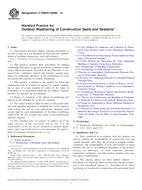
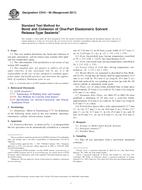 ASTM C910-06(2011)..
ASTM C910-06(2011)..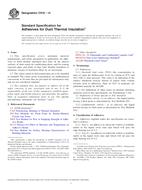 ASTM C916-14
ASTM C916-14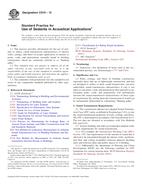 ASTM C919-12
ASTM C919-12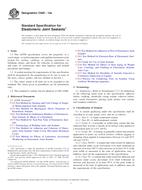 ASTM C920-14a
ASTM C920-14a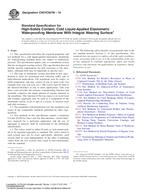 ASTM C957/C957M-10..
ASTM C957/C957M-10..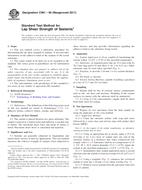 ASTM C961-06(2011)..
ASTM C961-06(2011)..
 Cookies
Cookies
